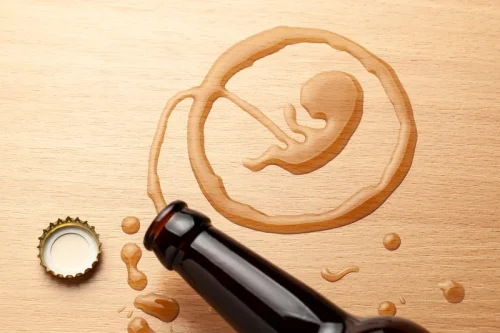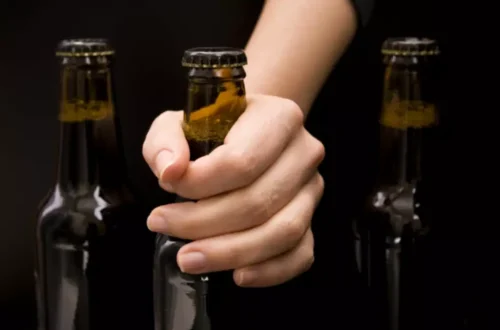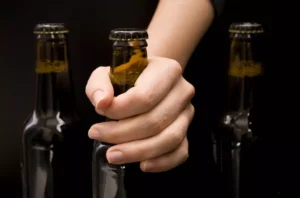
Members of a peer group are more likely to influence a person’s beliefs, values, religion and behavior. A group or individual may be encouraged and want to follow their peers by changing their attitudes, values or behaviors to conform to those of the influencing group or individual. For the individual affected by peer pressure, this can have both a positive or negative effect on them. However, a lot of social science research focuses on children and teens, who may seek the approval of peers as they move toward independence from their families. A 2020 study used a number of personality and peer influence measures to identify characteristics of adolescents who are more susceptible to peer pressure. Previous findings have brought evidence for an age-related increase of appearance orientation and modeling processes among adolescents whereas more direct aspects of peer pressure have proven to be quite stable.

Teen Recovery Program
- If someone persistently pressures you to do something, you can try telling them how it affects you.
- Developing romantic relationships is also a normal part of teenhood, but it can also lead to lots of peer pressure.
- In accordance with previous studies 13,15,25 our findings can serve as further evidence that these encouraging messages are more problematic than previously assumed.
- However, Striegel-Moore and Kearney-Cooke 34 revealed that American parents become more critical of their children’s physical attractiveness as the children grow older.
- On the other hand, spoken peer pressure can be incredibly effective if an individual is having a one on one conversation with someone that they respect and admire.
- Thus, social agents – especially peers and parents, who are closest to the adolescent – both consciously and unconsciously convey and enhance appearance-related norms through direct and indirect interactions 5,6.
We’re recognized experts on treating eating disorders, depression and other mood disorders. Identifying others in a group setting who are masked, so people don’t feel like the only ones. Also, seeing leaders in a group setting (think teachers, principals, managers) modeling mask-wearing can help. After you have removed yourself from the situation, focus on surrounding yourself with positive and uplifting friends and get involved in lots of healthy activities.
Positive Peer Pressure

These inconsistencies might result from the measurement of teasing as isolated indices or as combinations of peer and parental teasing. Positive peer pressure, on the other hand, can help prevent substance abuse and addiction. Research suggests simply having friends who choose not to smoke, use drugs, or drink alcohol can make it less likely young people will use substances. Unspoken pressure to conform can play a significant role in substance use.
Risks of Peer Pressure
It’s not uncommon for teens with strong morals to find themselves engaging in behavior that goes against their beliefs, simply because they want acceptance. Young people often lack the skills to come up with an excuse or reason to say no to negative peer pressure. It is also the most common age for kids to start experimenting with alcohol, drugs, sexual activity and other risky behaviors. Very often, the drive to engage in this kind of behavior is a result of peer pressure. Adolescents who have larger circles of friends appear to be less influenced by the suggestions or actions of their peers, but the pressure to conform is very real at this age. Peer pressure is a direct or indirect influence on peers, i.e., members of social groups with similar interests, experiences, or social statuses.
- For example, if someone offers a joint to your child, they can explain that they have a family meeting to attend and they cannot be intoxicated.
- Seeing peers use substances regularly can also give the impression that the substances are safe to use or won’t have any negative effects.
- Types of peer pressure include spoken and unspoken, direct and indirect, and negative and positive.
- Another investigation, completed in 2011, looked at the effect of peer pressure surrounding sexual activities in the youth surrounding US born Mexicans and Mexico born Mexicans.
- For adolescents, peer relationships are the most important of all thus leading to an increased susceptibility to peer pressure.
Indirect peer pressure
For example, you may carry the pressure of academic achievement into your career. You may also face challenges like wanting to “keep up with the Jones’” and feel pressure to purchase items you cannot afford to maintain an image that fits into your work, social, or neighborhood environment. Resisting to peer pressure is not precisely easy and according to this scientific article, teens are too responsive to this pressure, so these recommendations are useful in helping adolescents not to give in.
What are the effects of social media on peer pressure?

What starts out as positive peer pressure may become negative pressure if it leads a person to over-identify with sports, for indirect peer pressure example, putting exercise and competition above all else. It’s important to let your child know as much as you can about the effects of drugs and alcohol, the risks of unprotected sex, and the importance of remaining true to themselves. If your child is attending school, then it can help to have some idea of how to manage peer pressure. While most parents are concerned about the influence of their teenager’s friends and peer groups, it’s just as important to be aware of your own influence on your children. You are going to be your child’s primary model for independence, so it’s important to be aware of what sort of example you’re setting. For example, if a country boy raised to a wealthy family was sent to a private school filled with city kids, they would likely feel some pressure to change their behavior.
- It may also influence the person to participate in unsafe, risky, or dangerous sexual activities.
- The key to resisting peer pressure is for the teen to have role models, new ideas, and the positive effects of healthy self-confidence.
- Resisting peer pressure may feel challenging, but people who truly care about their friends do not reject them solely because they do not use drugs or alcohol.
- Girls were more affected by peer pressure, while gender differences in parental pressure seemed negligible.
- We could not replicate the interaction of weight and gender reported by Jones and Crawford 7, who hypothesized that girls experience teasing for higher weight whereas boys are teased for being underweight.
- The same study also found that students with higher resistance to peer influence were less likely to modify their behavior to match the perceived behavior of their peers.
General Health
Peer pressure can take on forms that have a little or nothing to do with drugs or alcohol. People can be pressured into partaking in certain activities or behaving in a certain manner. No matter what the case, https://ecosoberhouse.com/ peer pressure is a difficult situation that encourages people to do things that they would not normally do.
If you continue to have concerns regarding your child and peer pressure, reach out to teachers, school administration or a mental health professional for additional support. Changing hormones, developing brains and emerging identities makes the start of adolescence a particularly vulnerable time, where peer pressure is most influential. This is also a stage in life where friend groups are of utmost importance and the need to fit in is a major factor in decision making. Learn more about the types and effects of peer pressure and how you can prepare your child to deal with it in a healthy way. This study reports on the baseline survey of a longitudinal investigation for which the procedure was approved by the ethics commission and the local ministry of education.

